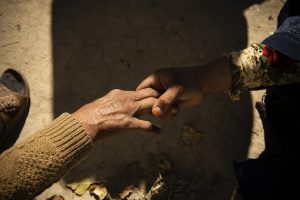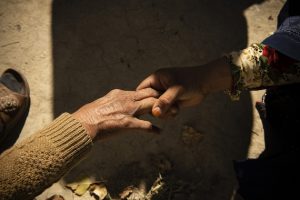WHO Calls for More Data on Violence Against Older Women and Women With Disabilities
 29 Maret 2024
29 Maret 2024

Older women and women with disabilities are underrepresented in global data on violence against women. Credit: WHO/Kiana Hayeri
By Naureen Hossain
UNITED NATIONS, Mar 29 2024 (IPS)
Older women and women with disabilities experience abuse that is unique to their demographics, yet they are underrepresented in national and global databases, according to findings shared by the World Health Organization (WHO).
On Wednesday, WHO and UN-Women released two new briefs, the first in a series that will discuss neglected forms of violence, including gender-based violence. The two briefs, titled Measuring violence against older women and Measuring violence against women with disability, investigate the types of violence that these groups face through the data available. Through reviewing existing studies into violence against women, the research team was able to synthesize the information available on this topic and its scope across different countries.
As was noted by Dr. Lynnmarie Sardinha, Technical Officer at WHO and the UN Special Programme on Human Reproduction (HRP) for Violence against Women Data and Measurement, and author of the briefs. The limited data on older women and women with disabilities undermines the ability of programmes to meet their needs. “Understanding how diverse women and girls are differently affected, and if and how they are accessing services, is critical to ending violence in all its forms.”
One in three women is affected by gender-based violence in these forms. For older women—aged 60 years and over—and women with disabilities, they are also subjected to other forms of abuse and neglect, usually at the hands of caregivers, family members, or healthcare institutions such as nursing homes. Examples of this include controlling behaviors such as withholding medicine and assistive devices, and financial abuse. Though these forms of neglect and abuse have been observed, the studies that the briefs reviewed seemed to focus more on intimate partner violence through physical and sexual abuse. The briefs acknowledge, however, that violence against women should not only be exemplified by intimate partner violence. The prevalence of this example hints at further nuances that are not sufficiently captured in the studies due to their limitations.
Violence against older women can manifest in other ways as they and their partners/perpetrators age. Although women aged 15–49 are at higher risk of intimate partner and sexual violence, older women are still likely to experience it, and this can shift towards other forms of abuse, such as neglect, economic abuse, and psychological abuse. The brief on older women reveals, however, that there is limited data to definitively state its prevalence. This is particularly the case for low- and middle-income countries; the data that was compiled for this brief comes largely from high-income countries, a gap that the reports are aware of. Older women are represented in only ten percent of the data on violence against women.
Only 6 percent of the studies reviewed for women with disabilities included measures of violence specific to this group. The lack of questions specific to this demographic indicates that they are, perhaps unconsciously, unaccounted for when measuring the scale of violence against women. Data collection procedures may not be designed to accommodate women with disabilities or prevent them from self-reporting, such as deaf or hard-of-hearing women who are unable to participate in surveys conducted through the telephone.
The briefs also suggest that women who live with lifelong disrespect and neglect may not recognize the specific forms of violence, which could account for fewer instances being reported. This could also apply to older women, where surveying and reporting mechanisms are geared towards women of reproductive age, especially in low- and middle-income countries.
This may also speak of socio-cultural attitudes towards violence against older women that are steeped in ageism, harmful stereotypes, and discriminatory cultural norms that prevent them from sharing their experiences.
The WHO briefs make several recommendations to address the evidence gaps. Among them are extending the age limit for survey participation and incorporating questions that relate to different types of violence. Data collection should also account for cultural-specific contexts of violence and abuse across different countries. Women with disabilities should be consulted in research at every stage when designing surveys targeted at them, which will allow for a broader spectrum of disabilities to be accounted for.
Read the briefs on women with disability and older women.
IPS UN Bureau Report
